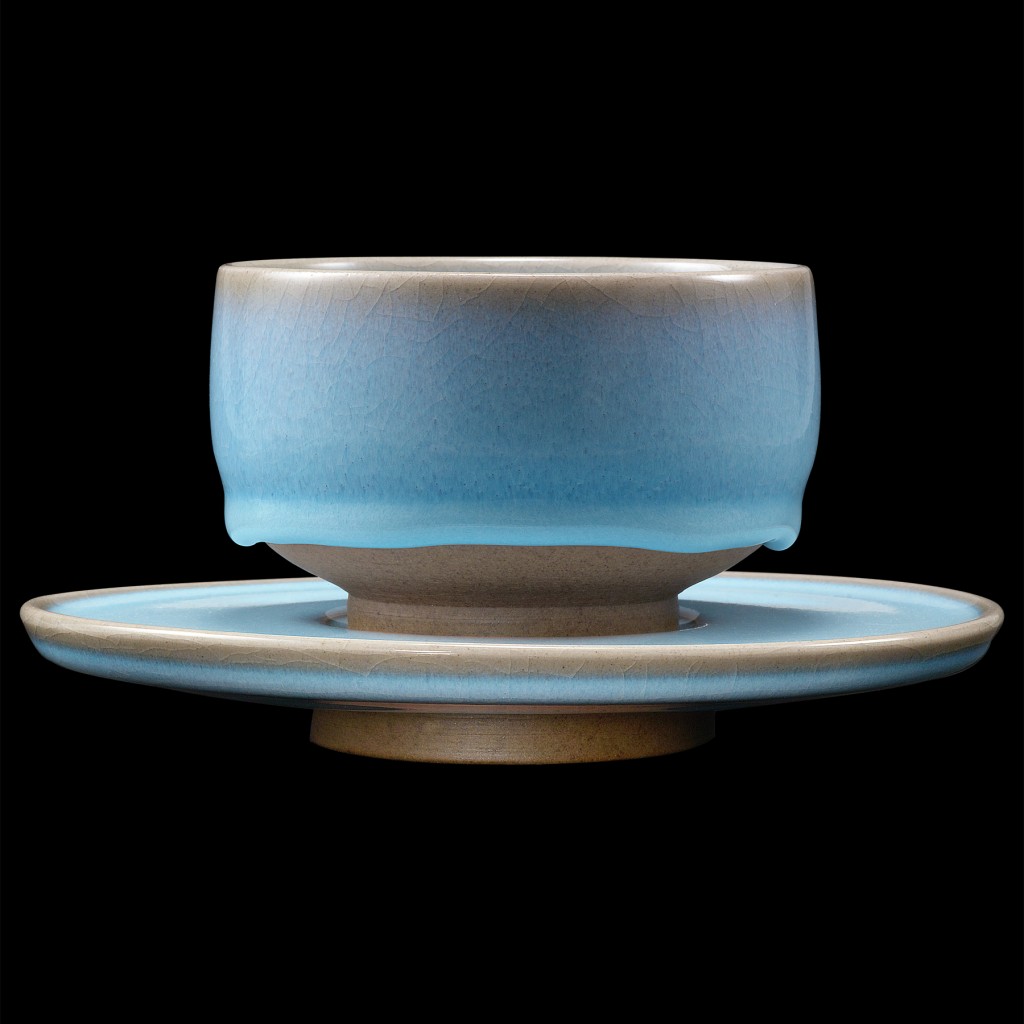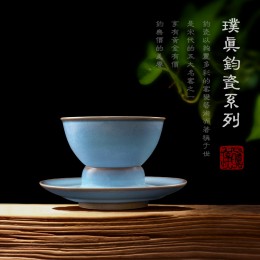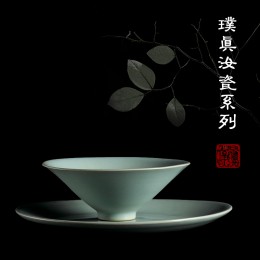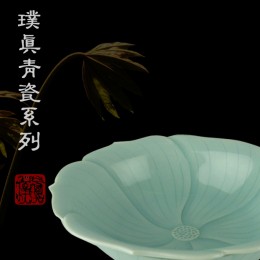Jun porcelain thrived during the Tang Dynasty and reached its peak during the Song Dynasty. Evolving from the Lu Mountain style porcelain in the Tang Dynasty, the technique that produced the rich copper red enamel was developed in the Northern Song Dynasty. The result is the unique style of the Song Dynasty Jun porcelain with kiln coloring.
 During the Song Dynasty, copper was used as the main colorant, which resulted in a reddish-purple enamel. A sesame enamel was applied at the base as a protective layer and then lifted off the surface inside the kiln with three temporary supports. The base was applied so that the porcelain would not be damaged when exposed to the external environment.
During the Song Dynasty, copper was used as the main colorant, which resulted in a reddish-purple enamel. A sesame enamel was applied at the base as a protective layer and then lifted off the surface inside the kiln with three temporary supports. The base was applied so that the porcelain would not be damaged when exposed to the external environment.
In the Northern Song Dynasty, Jun porcelains designs were elegant and dignified. The craftsmanship was fine and delicate, with an aesthetic tendency of pursuing absolute beauty and perfection. Hence, the Northern Song Dynasty era was often regarded as the pinnacle of Jun porcelain art.
However, the Northern Song Dynasty and its unparalleled porcelains collapsed with the invasion of the Nui Zhen ethnic group. In the Jin Dynasty that ensued, social and political turmoil between the Southern Song and Jin dynasties hindered the advancements of the Jun porcelain. Most bowls and plates produced in the Jin Dynasty were similar in fashion to those made in the Song dynasty, except larger in size. However, the overall quality in the craftsmanship was not as refined as that of the Northern Song Dynasty. The boutique pieces were also fewer in quantity and lower in quality.
When the Yuan Dynasty was established by Mongolians, the country was reunited and the economy was in upswing once again. So was the development and production of the Jun porcelain. During the Yuan Dynasty, Jun porcelains were mostly of a single variety, with enlarged sizes and rich ethnic characteristics. The enamel colors were azure, sky-blue and moon-white, with a more artificial coloring than that of the Northern Song Dynasty. Furthermore, the base layer was not fully applied with enamel before the firing process. While the design and production of the Jun porcelain advanced during the Yuan Dynasty, the quality of the products fell with fewer boutique pieces.
By the end of the Yuan Dynasty, the Jun Porcelain gradually lost its artistic appeal, and even disappeared in the annals of history. It was not until recent times did the production of the Jun porcelain regain momentum.
Today, the Jun porcelain technology and craftsmanship is still being perfected. Many of the pieces can be compared with those from the Song Dynasty in terms of style and quality. This was the result of a collective effort by contemporary Jun porcelain artists and individual endeavors such as Puzhen’s efforts to promote authentic Jun porcelain art to the world.
Looking for some more cool and relaxing products from Puzhen? Click here to get your 30% off Coupon Code on Puzhen specials!



